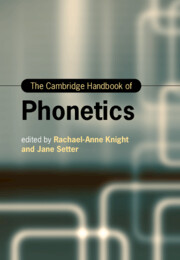Book contents
- The Cambridge Handbook of Phonetics
- Cambridge Handbooks in Language and Linguistics
- The Cambridge Handbook of Phonetics
- Copyright page
- Contents
- Figures
- Tables
- Contributors
- Introduction
- Section I Segmental Production
- Section II Prosodic Production
- 6 Stress and Rhythm
- 7 Lexical Tone
- 8 Intonation
- 9 Voice Quality
- Section III Measuring Speech
- Section IV Audition and Perception
- Section V Applications of Phonetics
- Index
- References
7 - Lexical Tone
from Section II - Prosodic Production
Published online by Cambridge University Press: 11 November 2021
- The Cambridge Handbook of Phonetics
- Cambridge Handbooks in Language and Linguistics
- The Cambridge Handbook of Phonetics
- Copyright page
- Contents
- Figures
- Tables
- Contributors
- Introduction
- Section I Segmental Production
- Section II Prosodic Production
- 6 Stress and Rhythm
- 7 Lexical Tone
- 8 Intonation
- 9 Voice Quality
- Section III Measuring Speech
- Section IV Audition and Perception
- Section V Applications of Phonetics
- Index
- References
Summary
This chapter surveys issues related to the production of tone in the world’s languages. Here the term ‘tone’ refers to the localised (within-syllable) use of fundamental frequency that contrasts lexical meanings (thus excluding pitch accent and stress languages). A comprehensive review of tonal phonetics is presented covering the acoustic correlates of tone, contextual tonal variation, methods used in tone production research, as well as recent research topics in tonal phonetics. We offer suggestions for teaching and learning of tone as a phonetics topic and the chapter concludes with suggestions for future directions for tone production research.
- Type
- Chapter
- Information
- The Cambridge Handbook of Phonetics , pp. 185 - 208Publisher: Cambridge University PressPrint publication year: 2021
References
7.6 References
- 1
- Cited by



